The solar system’s two massive gas giant planets pair up at dusk on December 21st, with a rare conjunction of Jupiter and Saturn.
A once-in-a-lifetime view is about to grace the dusk sky worldwide, closing out 2020 with one of the best astronomical events of the year.
Conjunction Junction
Dozens of planetary conjunctions grace our skies every year, as two planets seem to pair up as seen from our Earthly vantage point. Many are speedy affairs, as fast-moving inner worlds such as Mercury and Venus lap the sky, visiting the Moon, planets and stars along the ecliptic.
What’s more unusual is to spy a pairing up of the two slowest moving naked eye outer planets, Jupiter and Saturn. That’s just what happens next Monday, as Jupiter meets Saturn on the December 21st solstice. The two worlds will appear to be just 6.1 arcminutes (’) apart at ~18:00 Universal Time (UT) (1:00 PM EST), 30 degrees east of the Sun.
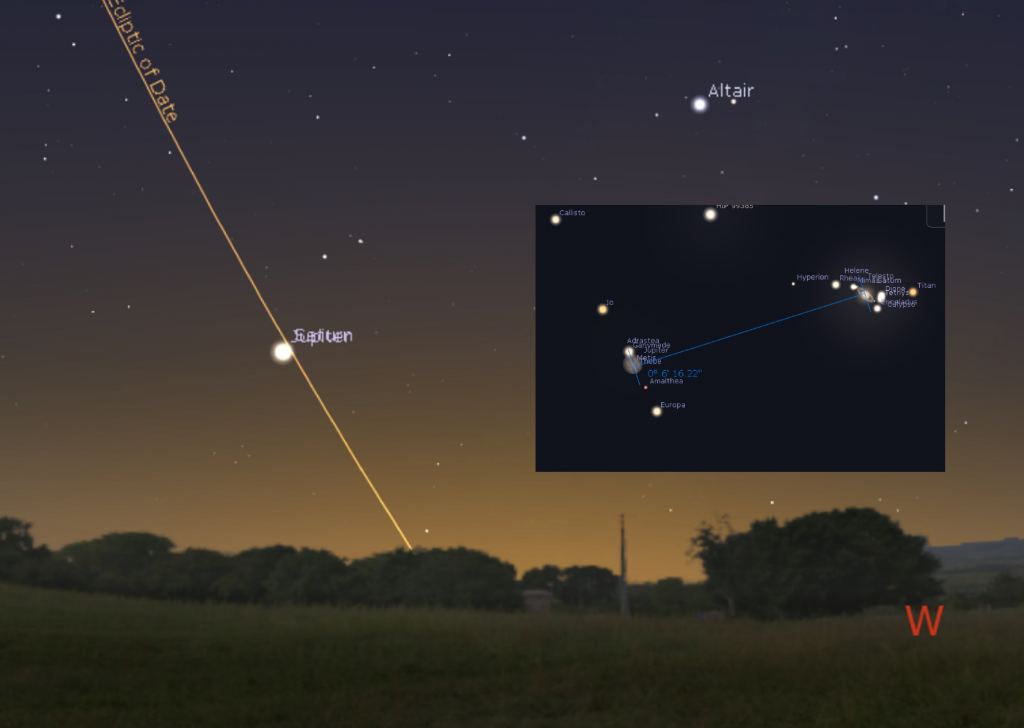
Though the two largest planets in the solar system lap each other once a generation (roughly once every 20 years), this conjunction is especially close: in fact, it won’t be topped until March 15, 2080 (6.1’). You have to go allllll the way back to July 16, 1623 to find one closer (5.2’ apart), though that particular conjunction was much lower in the sky and much more difficult to spot, at just 13 degrees from the Sun. The last easily visible pairing of Jupiter and Saturn topping this year’s was on the morning of March 5th, 1226 AD.
Jupiter and Saturn over Elliott Bay from Queen Anne Hill, Seattle @KSeattleWeather @ScottSKOMO @NWSSeattle @Astroguyz pic.twitter.com/V2Cd3hNjqF
— Columbia (@whitesky60) December 13, 2020
Though the timing of its very closest approach favors longitudes centered on Europe and Africa, you can see the two getting closer night-by-night worldwide this week, going into this weekend. In fact, Jupiter and Saturn will remain less than one angular degree apart (easily close enough to hide behind your pinky at arm’s length) until December 30th, and closer than 30’ (the angular diameter of a Full Moon) from December 17th to the 25th.
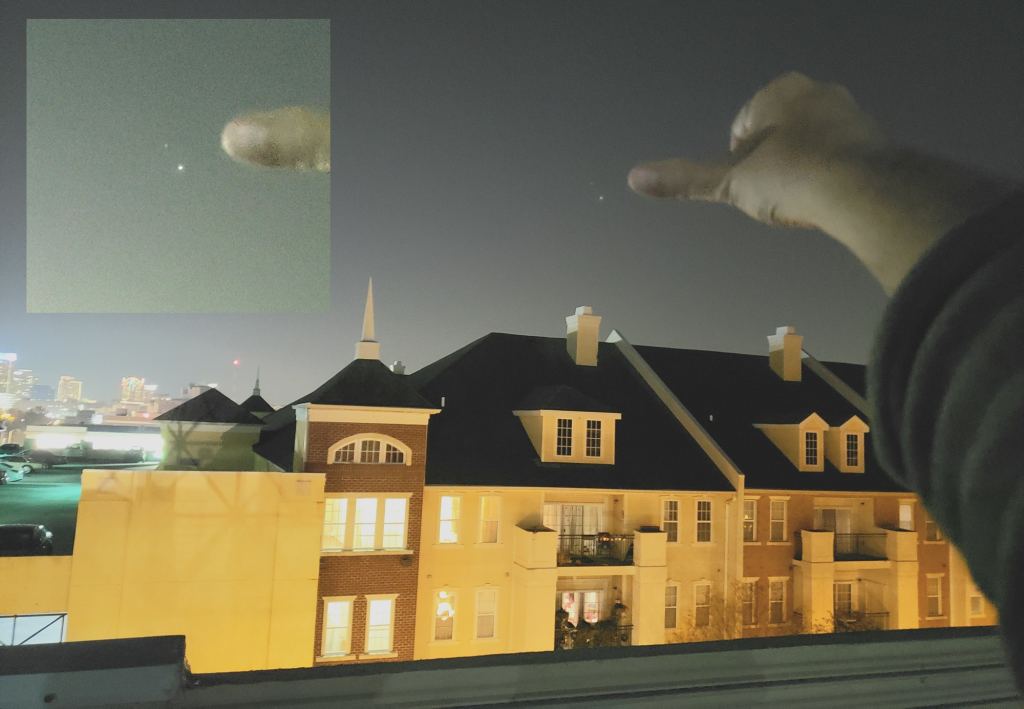
The two planets will almost seem to touch on the evening of the 21st, though in reality, the two gas giants are 883 million kilometers (548.7 million miles) apart. Jupiter shines at magnitude -2, while Saturn is just eleven times fainter, at magnitude +0.6. The razor thin waxing crescent Moon just misses occulting the pair by three degrees on the evening of Wednesday, December 16th. (photo-op!)
Be sure to crank up the magnification, as you’ll have the rare opportunity to fit both solar system gas giants in the same field of view. You’re looking at over 90% of the planetary mass of the entire Solar System, right in one convenient view. Jupiter is 33 arcseconds (”) across on the night of the conjunction, while Saturn is 36” (with rings) from tip-to-tip. Be sure to check out the respective retinue of moons for each as they slide by one another in the sky.
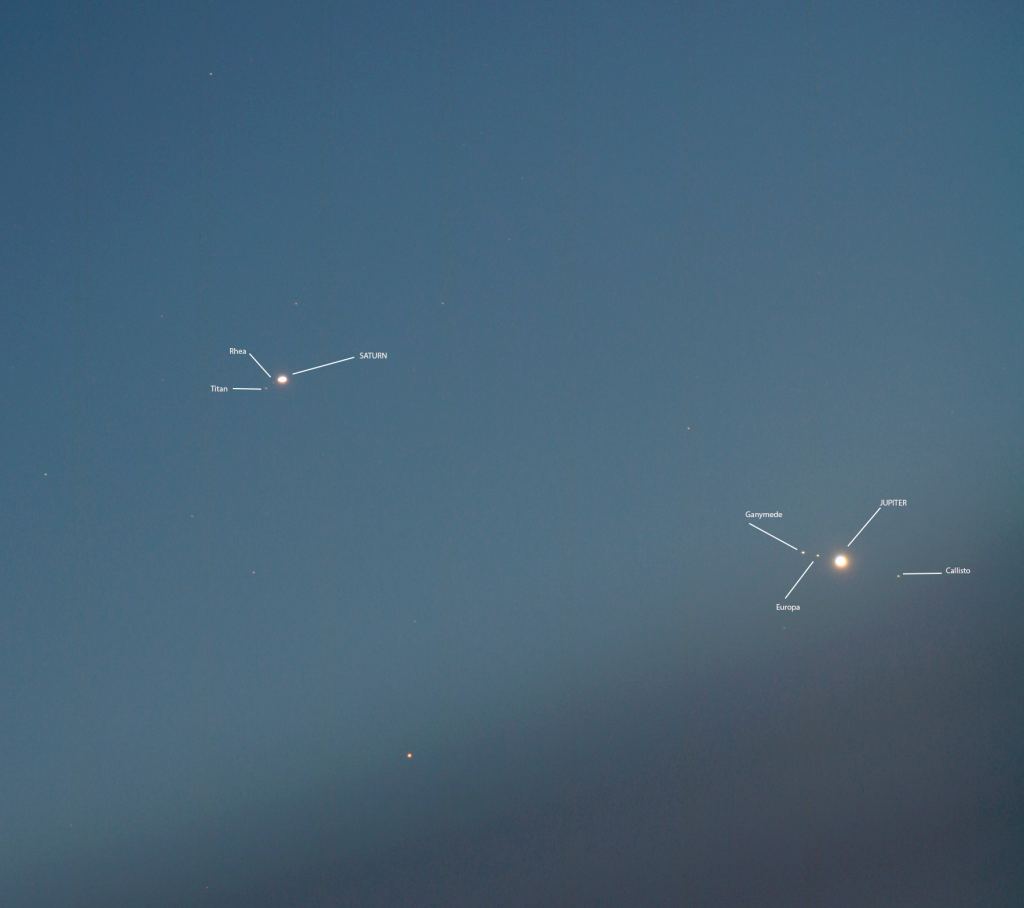
Views From Space
Looking back from the local vicinity of Saturn, you’d see Jupiter slide just 7’ past the Earth, with both just three degrees from the Sun.
17th astronomer Johannes Kepler placed great significance in the conjunctions of Jupiter and Saturn. Kepler was the last great astronomer who also subscribed in part to the archaic practice of astrology, and he scrutinized at length what he termed as the ‘great conjunctions,’ or repeating patterns of conjunctions of Jupiter and Saturn returning to the same astrological house every 60 years.
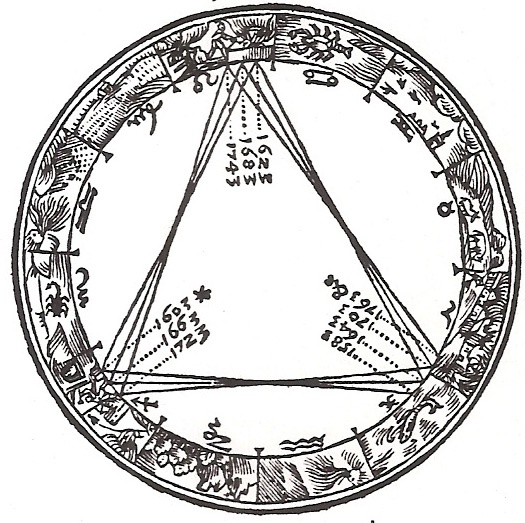
These ‘trines’ or triads of great conjunctions held great sway over Kepler’s thinking, leading him to suggest that the Star of Bethlehem was related to a close pairing of Jupiter and Saturn in 7 B.C. in Pisces the Fishes, a sign long associated with Judaism.
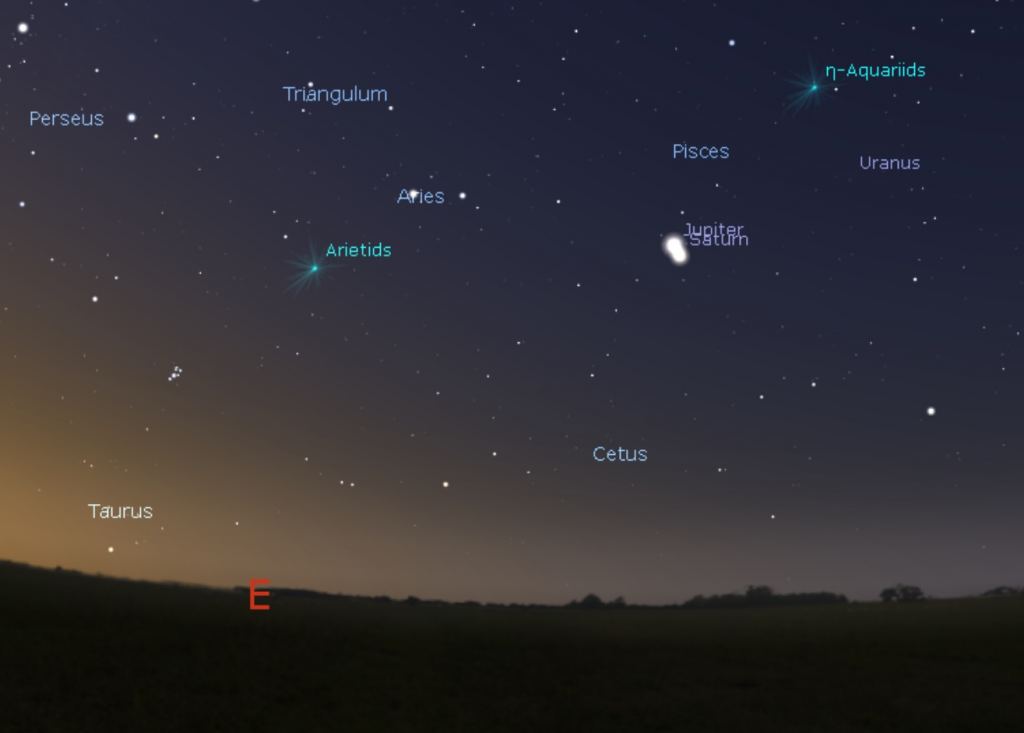
This year’s conjunction occurs on the border of the modern astronomical constellations of Sagittarius and Capricornus. With the conjunction falling just a few days before Christmas, expect the annual discussion of “what was the star of Bethlehem?” to come to the fore once again… though biblical and historical references to the actual event are so scant, we’ll probably never truly know for sure.
Looking Into the Far Future
Can Jupiter ever occult Saturn? Well, we looked at 20,000 years worth of conjunctions (it’s what we do for fun) and found 58 close (less than 10’ apart) conjunctions of Jupiter and Saturn over 200 centuries, with only 11 in the 2000 year span from 1000 AD to 3000 AD… but only 5 that are closer than the conjunction in 2020.
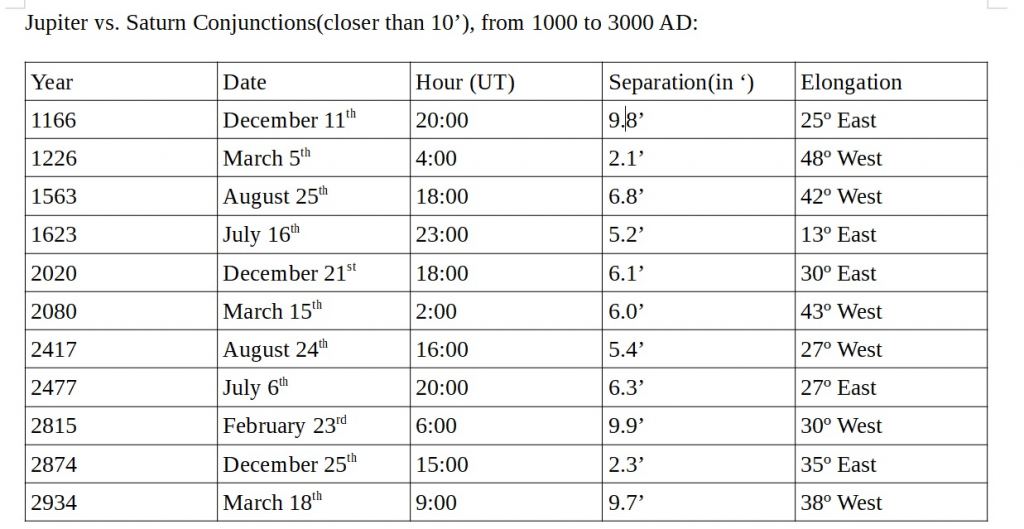
One especially intriguing event ‘may’ occur on (mark your calendars) June 21, 7541 AD, when Jupiter may actually occult (pass in front of) Saturn. This will certainly pose a bizarre spectacle, as the moons of the two intertwine, and Jupiter dons Saturn’s rings! We say ‘may’ because the precise position of the planets over extremely long periods of time are subject to tiny gravitational perturbations from each other, and those minuscule effects do add up to a small amount of uncertainty when we look out over tens of thousands of years.
To be sure, there’s not much in terms of scientific value behind next Monday night’s conjunction, but the spectacle offers a wonderful opportunity to show off the two worlds at the eyepiece, while we contemplate the clockwork universe and how it provides us with such rare views across time and space.
Lead image: Getting closer: Jupiter vs. Saturn from December 8th, 2020. Image credit and copyright: Tom Wildoner/Dark Side Observatory. Used with permission.


Awesome. Thanks Dave. I was wondering how close they’d be after Santa delivers my telescope on the 25th.
Still pretty close; about 30′ apart, the diameter of a Full Moon.